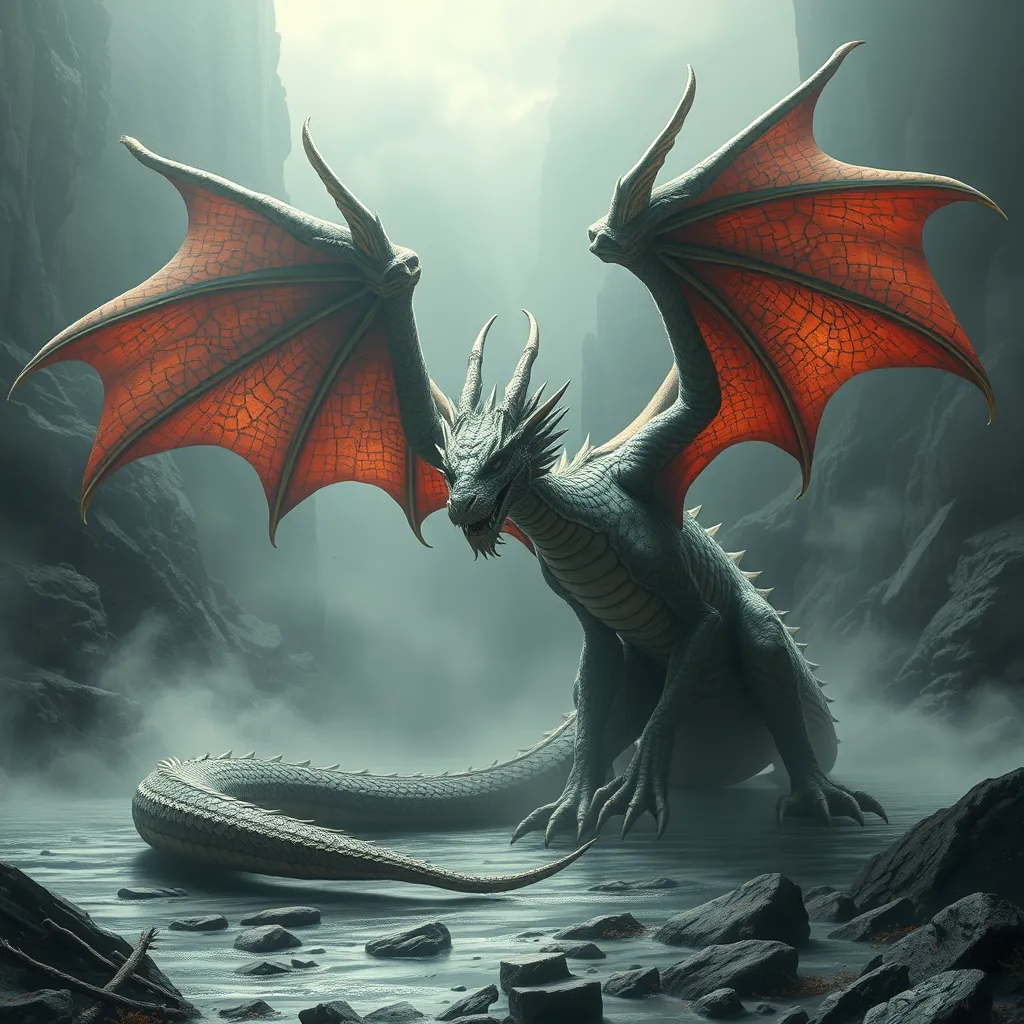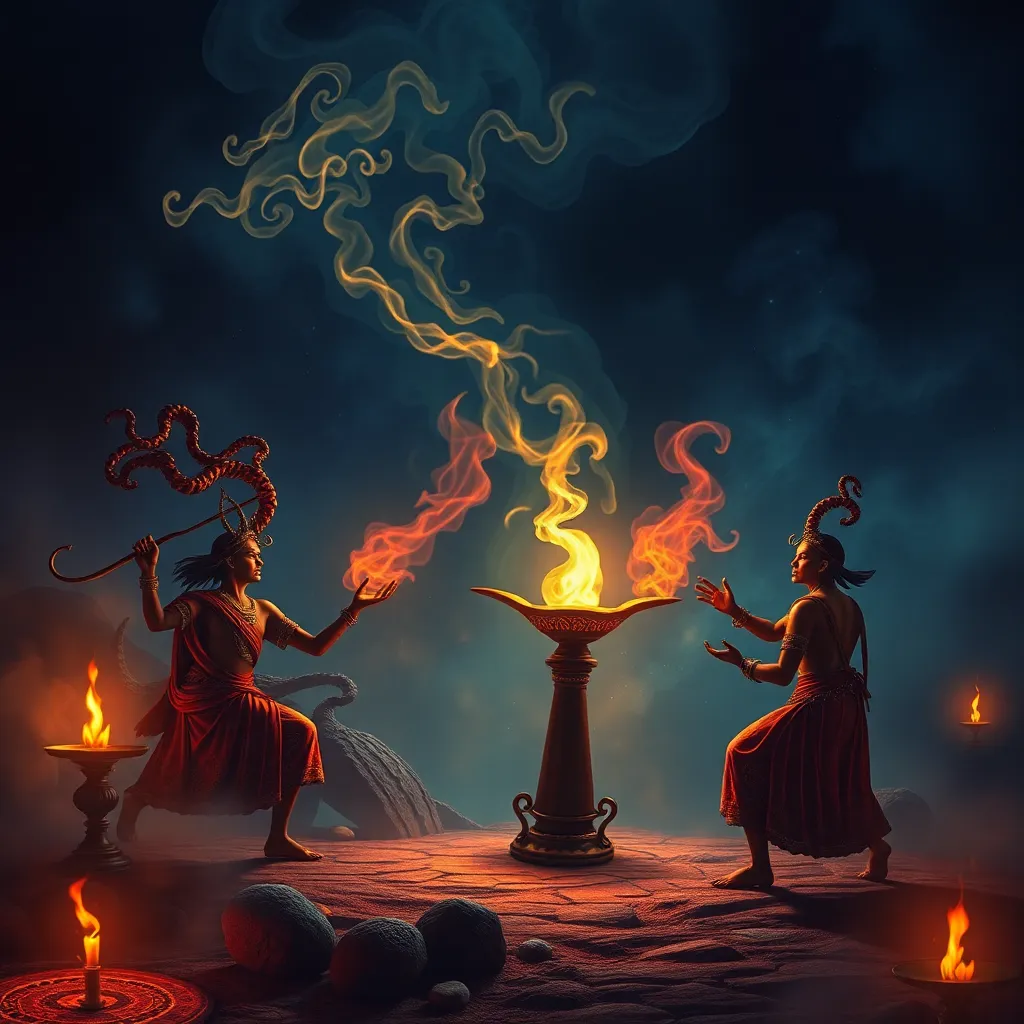The Dragon’s Language: Exploring the Different Ways Dragons Communicate in Myth and Legend
I. Introduction
Dragons have captivated the human imagination for centuries, appearing in myths and legends across various cultures. These majestic and fearsome creatures symbolize power, wisdom, and mystery. Understanding how dragons communicate is essential for grasping the depth of dragon lore, as it reveals their roles in stories and their relationships with humans and other beings.
This article aims to explore the different ways dragons communicate, delving into their verbal and non-verbal methods, magical connections, and the artistic representations that convey their language. By examining these aspects, we can gain a better appreciation for the rich tapestry of dragon mythology.
II. The Origins of Dragon Communication
The origins of dragon communication can be traced back to a myriad of historical contexts across cultures. From the wise and benevolent dragons of Eastern mythology to the fearsome fire-breathing beasts of Western tales, the ways in which dragons are portrayed often reflect the societies that created them.
Over time, dragon communication evolved as folklore adapted to changing cultural narratives. Oral traditions played a significant role in shaping these narratives, with stories being passed down through generations, often morphing in the telling. This evolution highlights the dynamic nature of dragon legends and how they can reveal insights into human fears, aspirations, and beliefs.
III. Verbal Communication: Roars, Hisses, and Beyond
Dragons are often depicted as having a unique vocalization system, with sounds such as roars, hisses, growls, and even melodic songs. These sounds serve different purposes and convey a range of emotions and intentions.
- Roars: Typically represent dominance or a warning to intruders.
- Hisses: Often indicate irritation or a defensive posture.
- Growls: Can signal hunger or aggression.
- Melodic Sounds: In some cultures, dragons are said to communicate through beautiful songs that can enchant listeners.
The symbolism of specific vocalizations varies across cultures. For instance, in Chinese mythology, the dragon’s roar is considered a powerful omen, while in European lore, it may signify an approaching threat. Interestingly, some tales depict dragons as capable of speaking human languages, conveying wisdom or warnings to those who encounter them.
IV. Non-Verbal Communication: Body Language and Gestures
In addition to vocalizations, dragons also communicate through body language and gestures. Their posture and movements can convey a wealth of information about their emotional state and intentions.
- Posture: An aggressive dragon may exhibit a tense posture with raised wings, whereas a friendly dragon might lower its head in a gesture of submission.
- Color Changes: Many dragon myths include the ability to change colors, which can signify mood; for example, a dragon turning red may indicate anger, while a blue dragon might represent calmness.
- Wing Displays: The way a dragon spreads its wings can indicate its readiness to engage in battle or its desire to take flight.
- Tail Movements: A thrashing tail often signals agitation, while a gently swaying tail may indicate curiosity.
V. Telepathy and Magical Communication
In various dragon lore, the concept of telepathy plays a significant role in how dragons communicate. Many stories depict dragons as possessing magical abilities that allow them to connect with humans and other creatures through thoughts or emotions.
Instances of dragons communicating with humans through telepathy often highlight a deep bond between the two. This connection can be seen in literature and film, where dragons share wisdom or warnings without the need for spoken words. Some notable examples include:
- Eragon: In Christopher Paolini’s series, the bond between the dragon Saphira and her rider allows for thought communication.
- How to Train Your Dragon: The relationship between Hiccup and Toothless showcases a deep understanding and emotional connection that transcends language.
VI. The Role of Symbols and Art in Dragon Communication
Symbols and art play a crucial role in representing dragon communication. Iconography is often used to convey messages and characteristics associated with dragons, influencing how they are perceived in different cultures.
The use of runes and magical scripts is another fascinating aspect of dragon lore. Many myths feature ancient scripts that are believed to hold power when used in conjunction with dragons. For instance:
- Runic Symbols: In Norse mythology, dragons are often depicted alongside runes, which are thought to enhance their magical abilities.
- Artistic Representations: Visual art, such as paintings and sculptures, often conveys stories about dragons, their powers, and their interactions with humans, serving as a form of communication that transcends time.
VII. Comparative Analysis: Dragon Communication Across Cultures
Dragon communication varies significantly between Eastern and Western myths, reflecting differing cultural perceptions. In Eastern traditions, dragons are often seen as benevolent, wise, and protectors, while in Western narratives, they are frequently portrayed as fierce adversaries.
Case studies of Chinese dragons versus European dragons reveal intriguing differences:
- Chinese Dragons: Often depicted as wise beings capable of communicating with humans, these dragons are associated with water and agriculture and are revered as symbols of good fortune.
- European Dragons: Often considered malevolent, these dragons are typically portrayed as greedy and destructive, communicating through intimidation and violence.
The cultural perceptions of dragons significantly impact their behavior and communication styles, shaping the narratives in which they exist.
VIII. Conclusion
In conclusion, dragons communicate in a multitude of ways, from verbal sounds to non-verbal gestures and magical connections. Understanding these methods enriches our appreciation for dragon lore and its complexities.
The implications for modern interpretations of dragons in media are profound, as filmmakers and authors continue to explore and reinterpret these legendary creatures. The enduring legacy of dragon communication in myth and legend highlights the timeless fascination humans have with these enigmatic beings, ensuring that their stories will continue to captivate generations to come.



